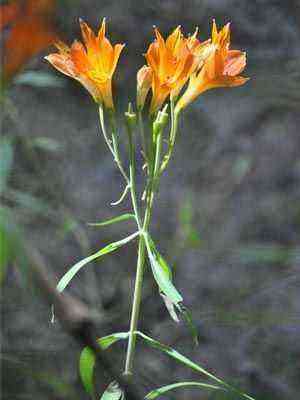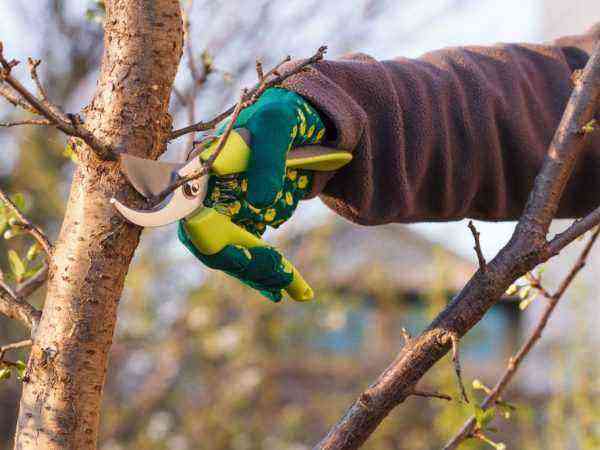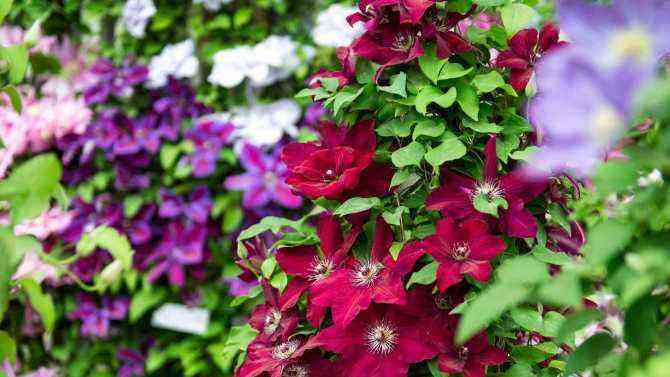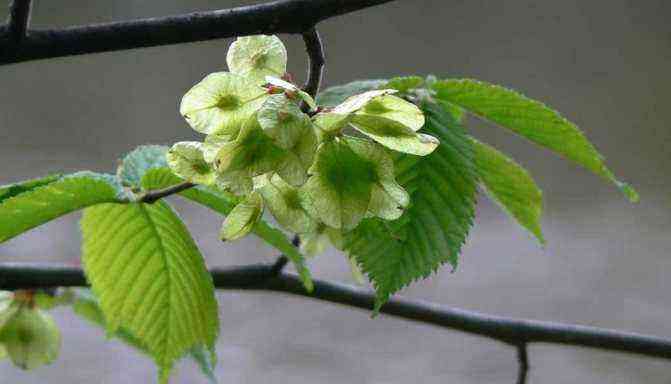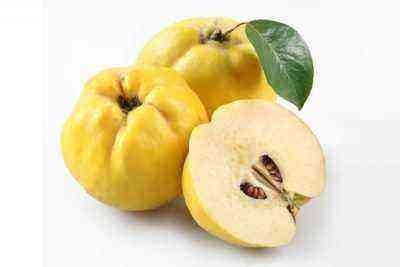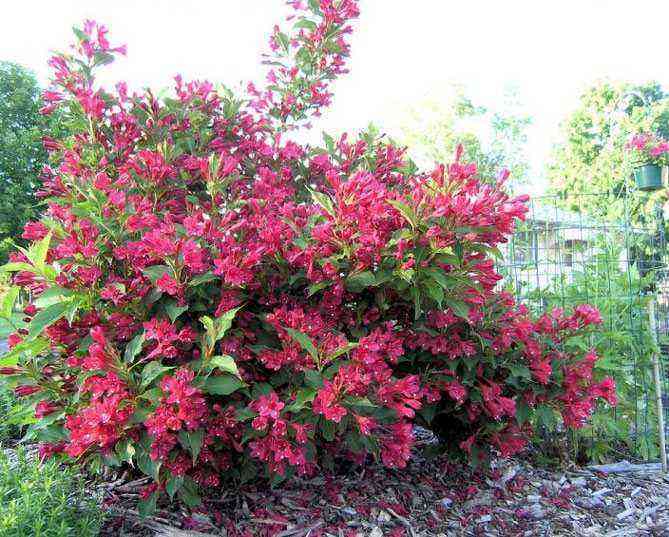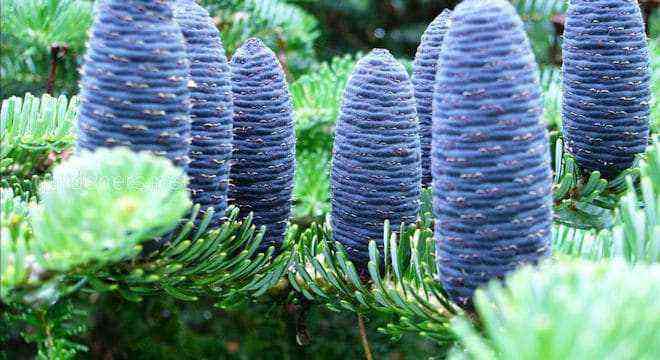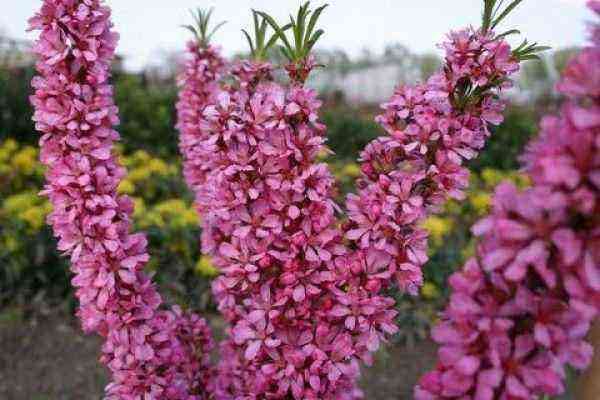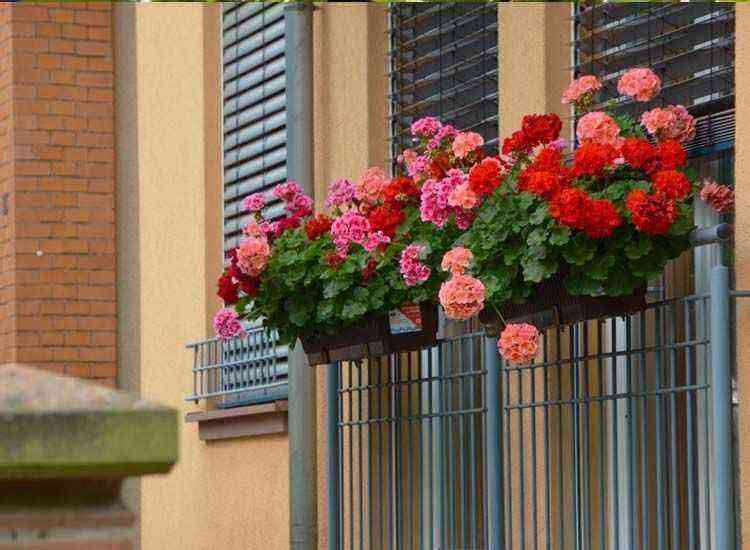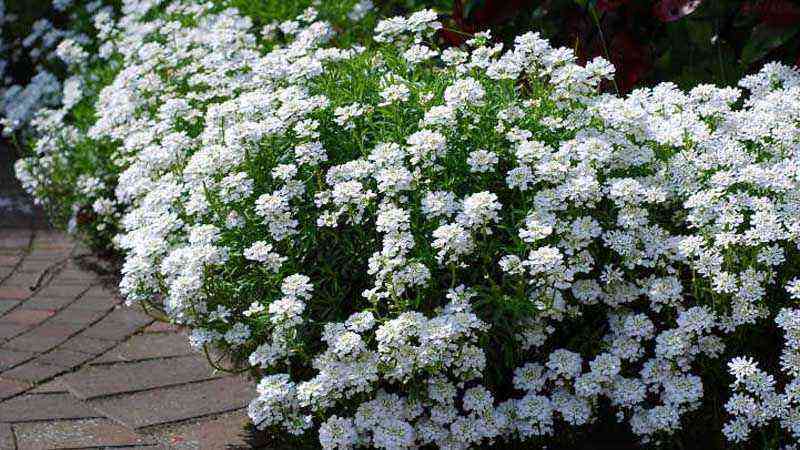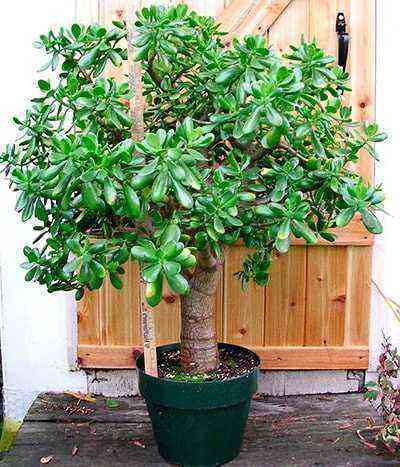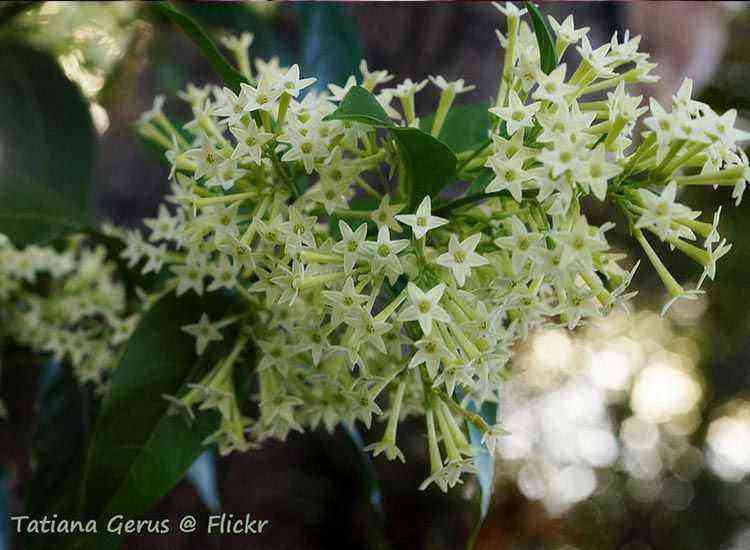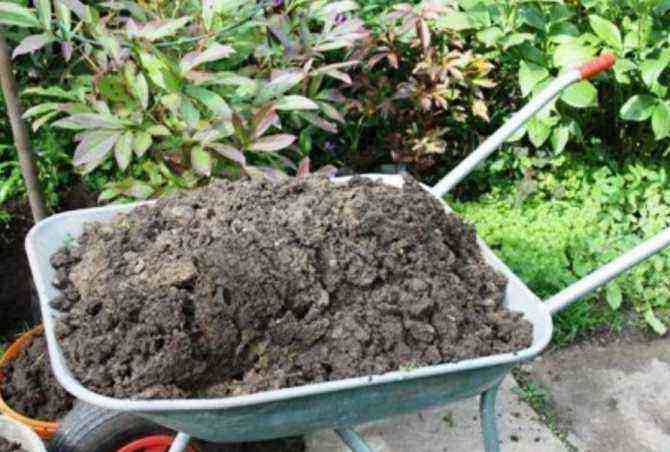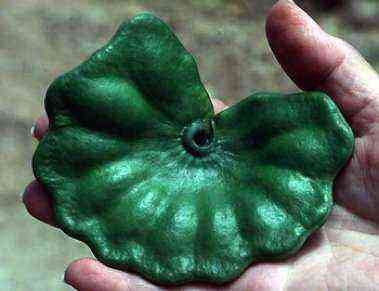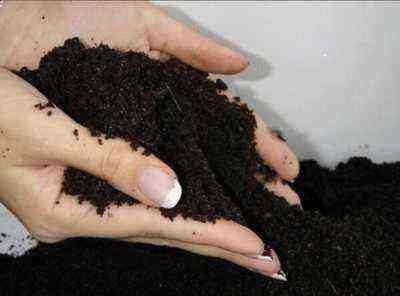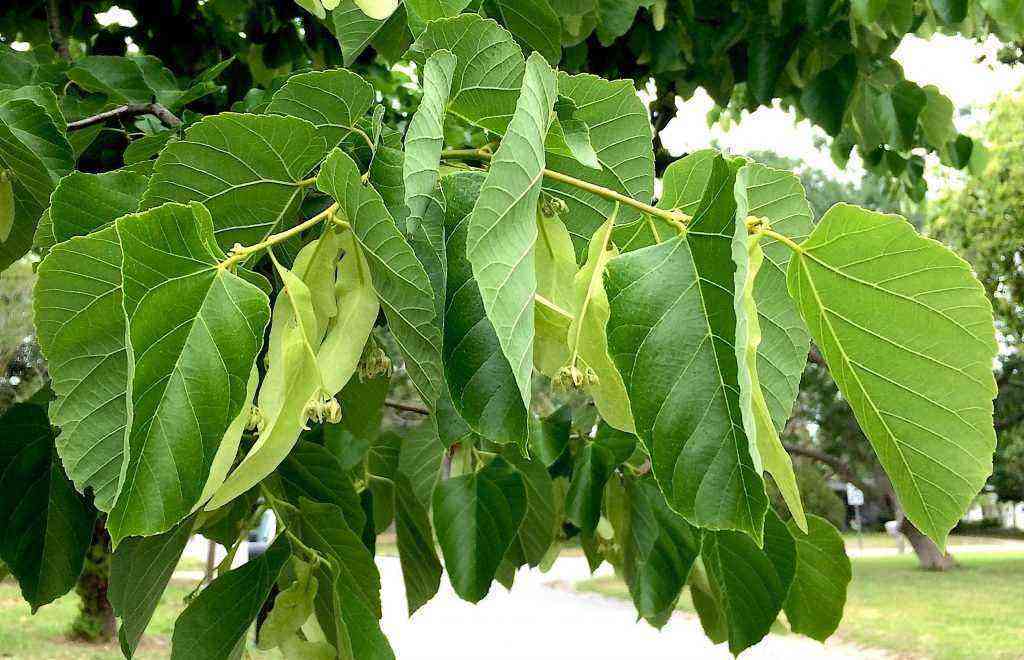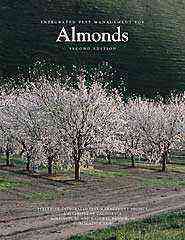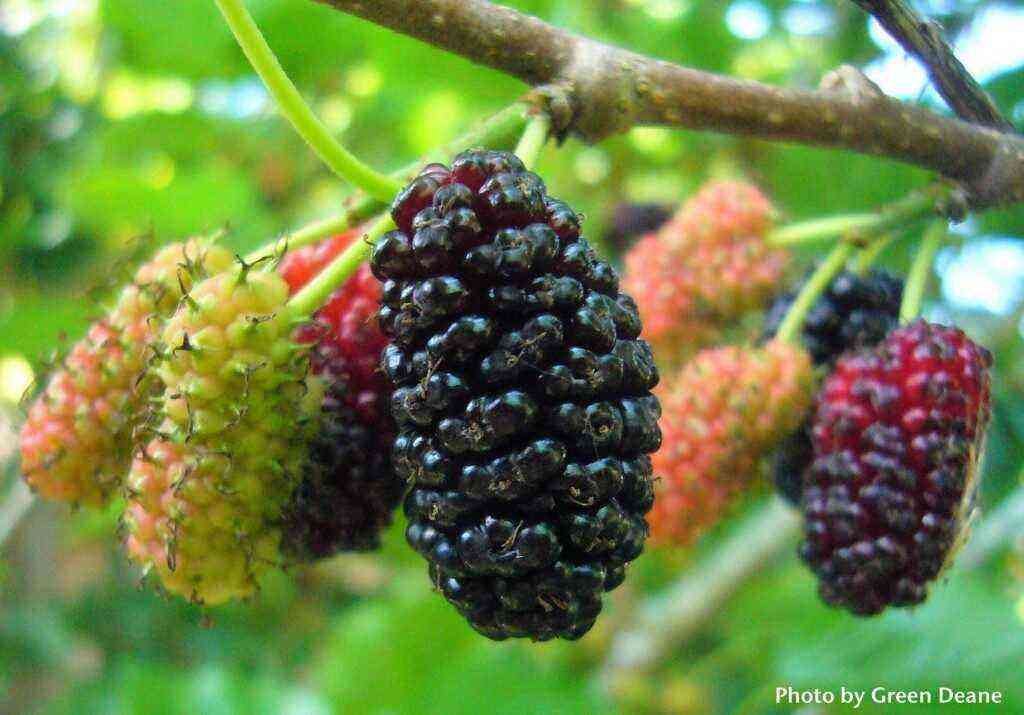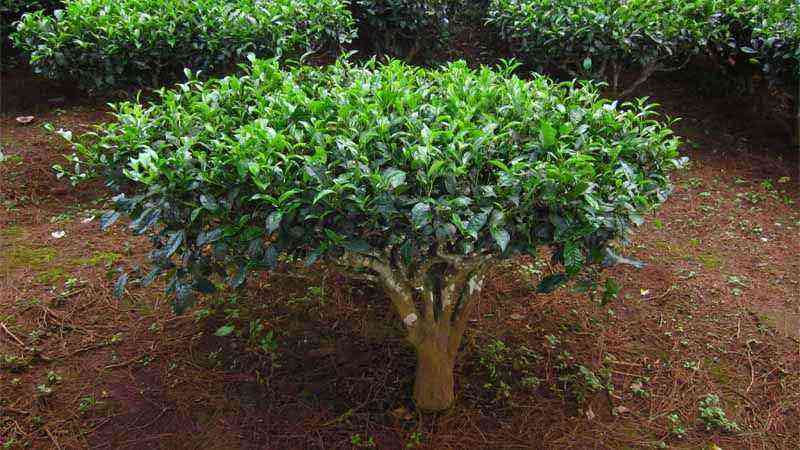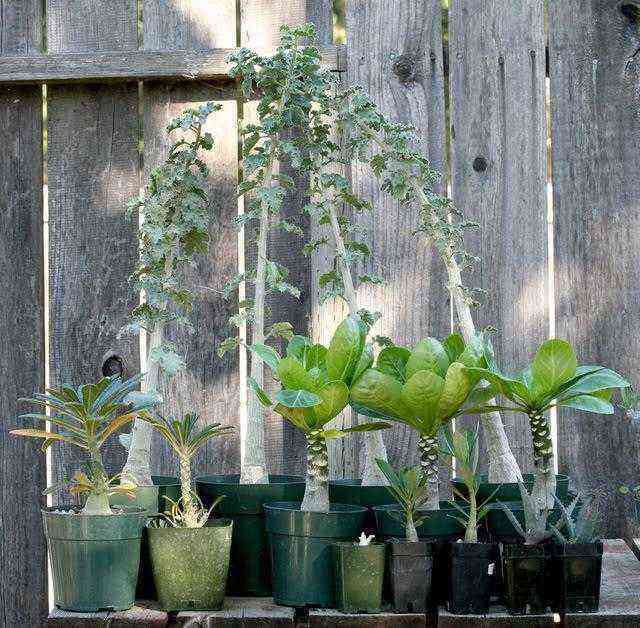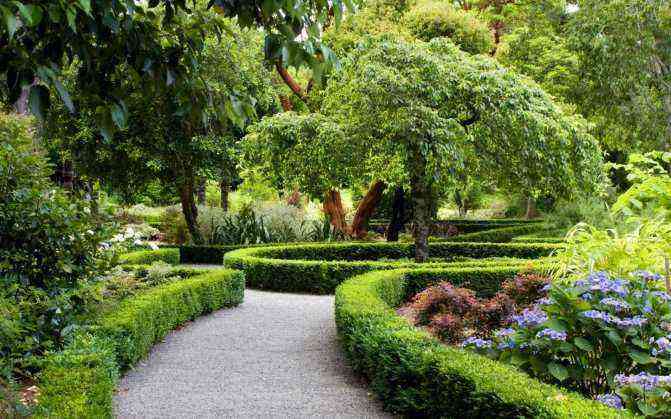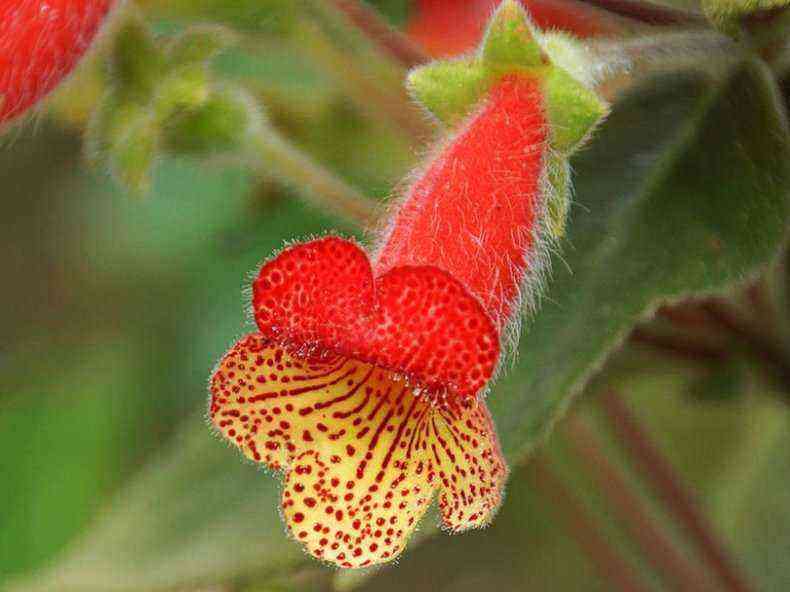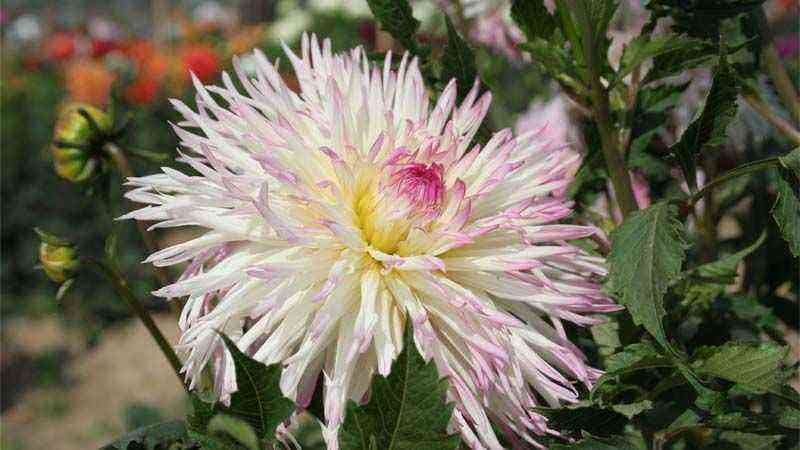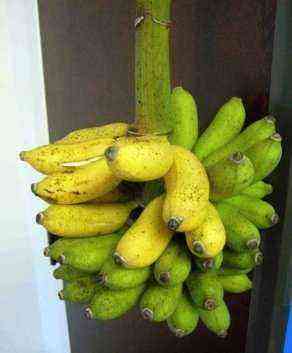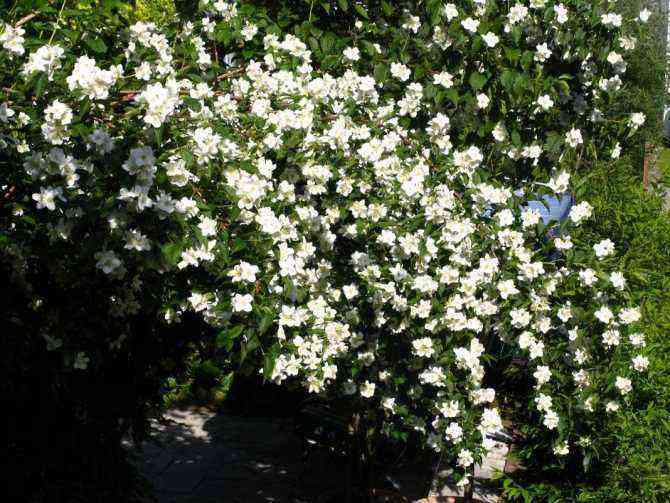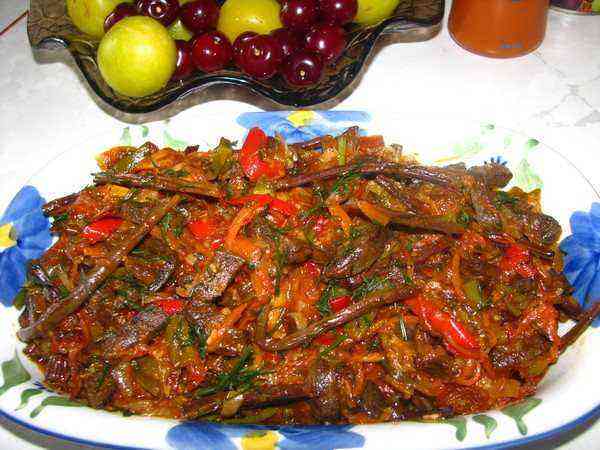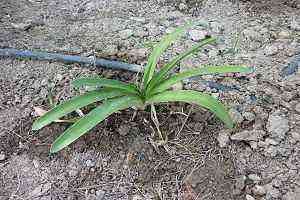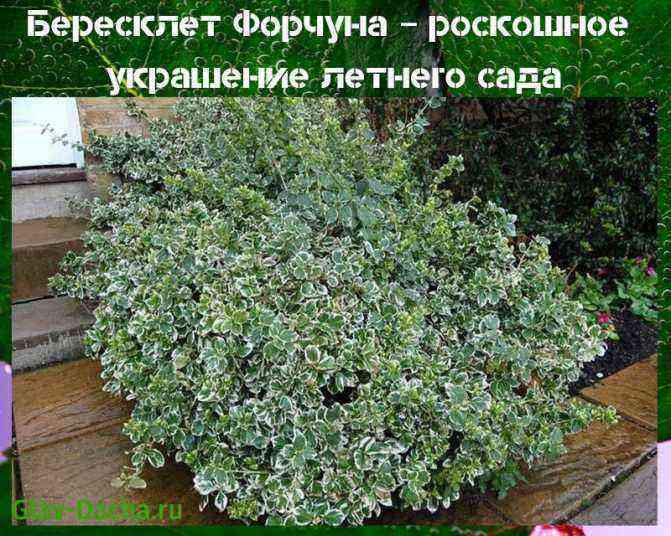Description of chubushnik
Chubushnik is a flowering shrub, mistaken by many for jasmine. The aroma exuded by the plant gives reason to think so. Light flowers densely cover the mock-orange, which really looks like jasmine. But plants belong to different families, their bark is different in color. In addition, jasmine is evergreen, and mock orange is a deciduous shrub.
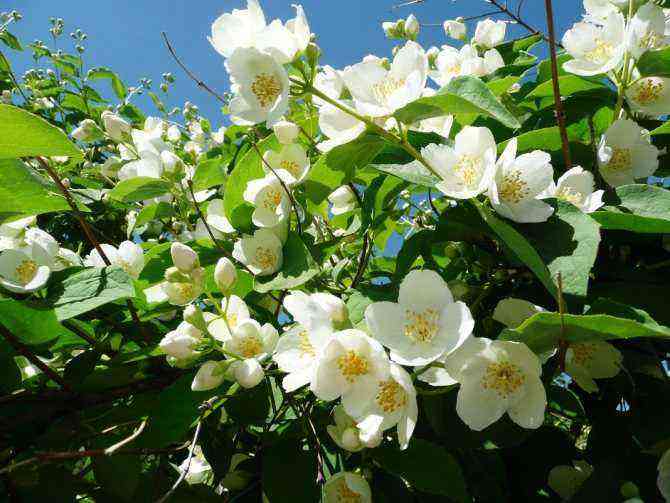
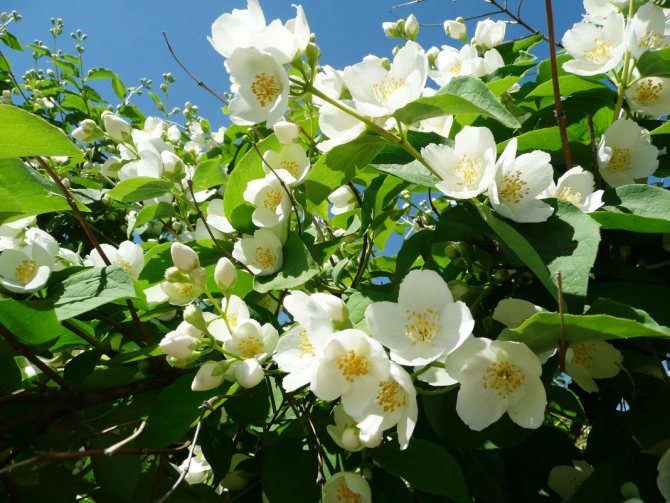
Chubushnik
Species and varieties
The plant has more than 60 species, including:
- Common chubushnik. The shrub grows up to three meters in height, its flowers are soft cream.
- Chubushnik Lemoine. A hybrid plant, all varieties of which are distinguished by a pronounced sweetish aroma. Although the flowers of the variety virginal or mock-mushroom virginsky practically do not smell. They are medium in size, grow up to 5 centimeters in diameter, collected in a brush. Terry chubushnik, famous for its frost resistance, has voluminous attractive flowers. The ermine mantle is covered with a large number of buds. They are arranged in several tiers, resembling a bedspread spreading across the garden. Strawberry mock orange emits a scent reminiscent of the familiar wild berry.
- Crown chubushnik. Sprawling shrub with dense foliage survives at temperatures of minus 25 degrees. It has creamy flowers up to 5 centimeters in diameter.
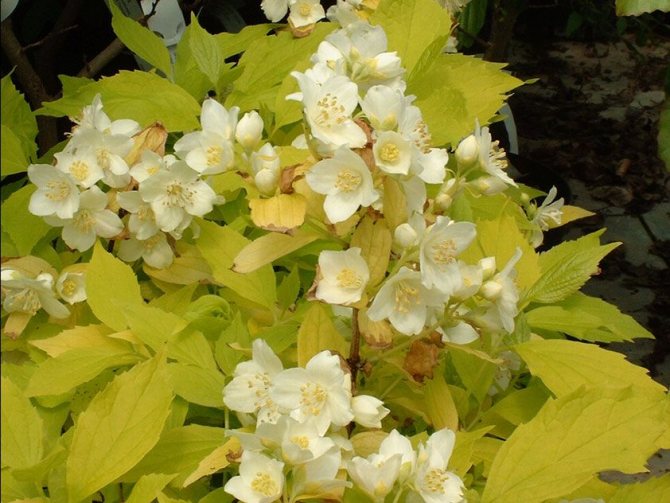
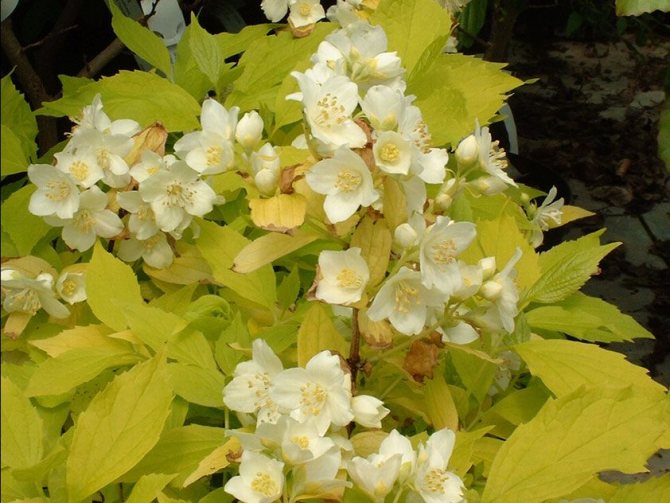
Coronary
In the Urals, the Chubushnik Unusual grows, planting and caring for it is not burdensome in harsh conditions. It feels comfortable in cold winters as it was specially created for growing in cold climates. Its creamy petals are bright crimson at the base.
Description of the plant, popular species
Chubushnik belongs to the Hortensia family . In free conditions, it grows in Europe and North America, as well as in the east and southeast of Asia. In Latin, chubushnik sounds like “Philadelphus”. The flower received this name in honor of Ptolemy Philadelphus, the king of Egypt and the son of Cleopatra.
Since the strong wood of the bush was used to make shanks and mouthpieces for smoking pipes, the plant was named “chubushnik”.
The wood is characterized by high hardness, which has a wide core. The thin bark is characterized by a gray color; on young shoots, it is brown and tends to flake off. Simple leaves 4-7 cm long are opposite. Leaf plates can be of different shapes: ovoid, oval or elongated. The edges can be jagged or solid, the base is rounded or wedge-shaped.
The diameter of large flowers ranges from 3-6.5 cm. They have a simple shape in the species of chubushniks, and double and semi-double in varietal ones. The flowers are white, cream and yellowish in color. Flowers of 3-9 pieces are collected in racemose inflorescences that form at the ends of young shoots of the lateral parts of the bush. The fruits are represented by three- or pentahedral capsules containing small seeds.
Chubushnik has a high degree of cold resistance, however, not all varieties are able to survive harsh winters in the open field. But, as you know, frosts can damage only the aerial part of the shrub, while powerful roots will remain intact. With the onset of spring, the damaged parts are cut off, and the root system helps the plant to recover and grow new healthy shoots.
Types
In the world, there are up to 70 species of mock orange, and there are a great many varieties. The following types of flowers are grown in our area:
- Chubushnik Coronary . The homeland of this species is the Caucasus, Asia Minor and Southern Europe. The shrub can reach a height of 3 m. Young shoots have cracked bark of a yellowish or red-brown hue. Petiole leaves densely cover the branches. The leaf plates have an oval shape, jagged edges, a bare upper part and a slightly pubescent lower part. The creamy flowers adorn the shrub for three weeks.
- Chubushnik Lemoine . The hybrid variety, widespread in Europe and North America, grows up to 2-3 m. The spreading shrub has ovoid lanceolate leaves that grow up to 4-5 cm in length. The plant is known for fragrant white flowers, which are collected in inflorescences of 4-7 pieces.
- Common chubushnik . Under natural conditions, it grows in the Caucasus and southern Western Europe. Erect and bare shoots form a three-meter shrub. Leaf plates 6-9 cm long have a simple, oblong, elliptical shape. The edges have sparse denticles and pointed tops. The upper side of the leaves has a bright green color, the lower side has a pale green tint. Small flowers are characterized by a white-cream color and are collected in 6-7 pieces in a racemose inflorescence. The winter-hardy species can withstand temperatures up to -26 degrees.
Growing a mock-orange from seeds
It is not difficult to grow a mock-orange. The main thing is to follow the recommendations, and then the plant will quickly get stronger and give shoots.
Sowing
Chubushnik and jasmine – what is the difference
How to plant a mock orange with seeds, a description of the process:
- Sowing material is prepared in advance. The seeds are soaked for several days so that they swell.
- In the spring, they are recommended to be planted in a greenhouse or separate containers. The seeds are mixed with sand and placed in a prepared place.
- Sprinkle with humus.
- Moisturize a little. For future plants, it is important to maintain the correct balance in watering, prevent the earth from drying out and make sure that there is not too much moisture.
- Place the seeds in the shade.
Planting can be started in autumn or winter. For this, the seeds are placed in the prepared grooves and slightly moistened the soil. It is imperative to cover the plants so that the frost does not harm them. Usually straw and spruce branches are used. It is not necessary to open shoots in winter. When the snow melts, new protection will be needed, already from the scorching sun.
Important! Covering material is needed until the plants are strong.
Care of seedlings
When the seedlings sown in spring grow up, they need to be dived so that they do not interfere with each other’s development. The land must be loosened and watered, if necessary, remove weeds. After a year, it is advised to prune by removing most of the plant. Thanks to this, the shoots will become strong. If the shrub was in a greenhouse or in a separate container, it is transferred to a permanent place. After transplanting, the plant must be watered abundantly.
You can not wait for next year, but plant the plants in open ground at the end of May. At the beginning of the month, take them outside to temper them. Be sure to keep them in the shade at this time.
How to transplant garden jasmine mock-orange
Not only for its powerful snow-white flowering, but also for its good adaptability after transplantation, garden jasmine is appreciated by numerous admirers. For transplanting, plants are used at any time except for the flowering period. If the transplant is carried out in the spring, then this year the jasmine will not delight anyone with its flowering.
When transplanting, the following actions are carried out:
- the jasmine bush is filled with water, in excess, so that it is easier to dig it out of the ground;
- while the soil is soaked in water, pruning is carried out: old branches, including last year’s branches, are cut off completely, while young ones are slightly shortened;
- then the bush is dug up and transplanted to a new place.
At least 2 buckets of settled water will be needed to water the transplanted bush. Then the ground around the plant is sprinkled with a layer of humus as mulch.
Landing in open ground
Barberry – planting and care in the open field
Its growth and flowering depends on how to plant the mock-orange bush and in what place.
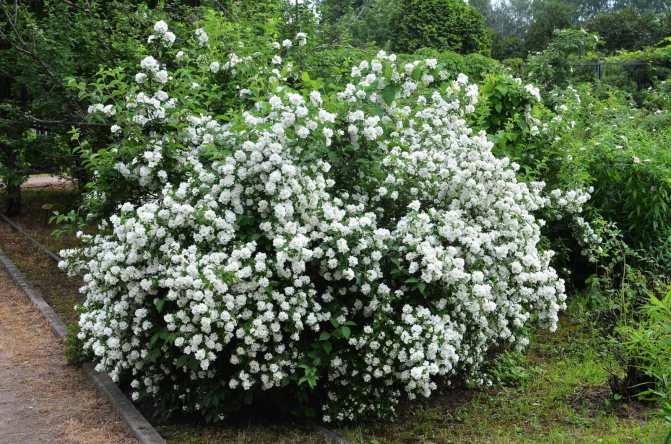
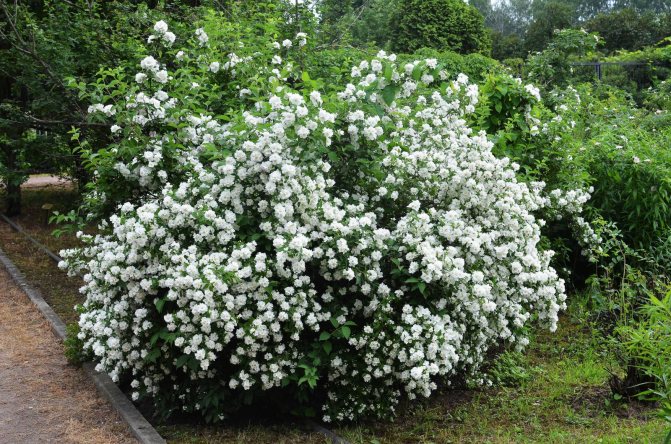
The right place
The main thing is to choose a well-lit area, otherwise the foliage will be lush. At the same time, the shoots will stretch out strongly in search of the sun, and the buds will practically not be tied. The soil must be fertile and well-drained.
When to plant
Chubushnik is best planted in early spring, before the buds bloom, or in autumn. In the latter case, you need to be in time before the onset of frost, otherwise the plant will not survive.
How to plant
Before planting a chubushnik bush, you need to dig a hole, 50 to 50 in size. This is done two weeks before the planned date. A drainage layer is laid at the bottom, expanded clay or pebbles are suitable. Then the soil is filled up.
The composition of the soil determines the growth and development of the plant. You need to mix:
- leafy ground – 3 parts;
- sand – 2 parts;
- humus – 1 part.
The shrub is deepened by 2-3 centimeters and added dropwise. Be sure to mulch the plant and water it.
Important! Other flowers and trees should be at least 50 centimeters from the mock-orange.
Species and varieties
Breeders managed to breed a little more than 70 plant species. Non-double jasmine is characterized by a strong aroma and ranks 3rd in terms of scent intensity, 1st and 2nd belong to rose and lilac.
Popular species
In our climate, locally bred varieties take root better. European species are poorly developed and bloom poorly.
- Virginal. The bush grows up to 3 m in height. With proper care, the flowers bloom twice a year. In spring, there is a lush bloom and white flowers bloom. In autumn, the flowering is moderate, and the flowers turn yellow. Retains its decorative appearance for 20 years.
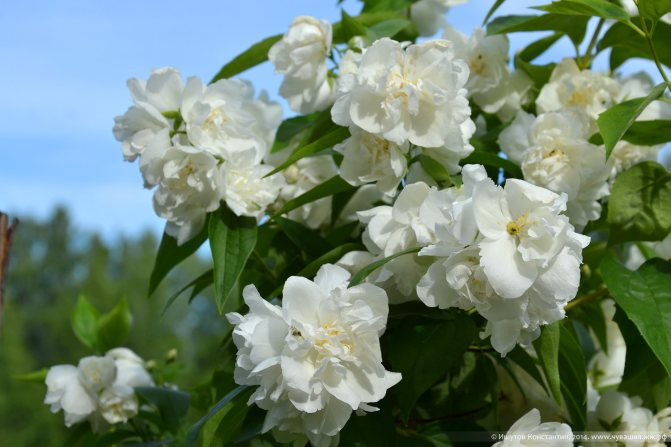

- Pyramidal. Differs in milky white flowers. The smell is subtle. Blooms late. It grows up to 3 m. It is friendly side by side with small species of shrubs.


- Glacier. Differs in large inflorescences and snow-white flowers. It is considered decorative and reaches 1.5 m in height. Blooms up to 35 days.
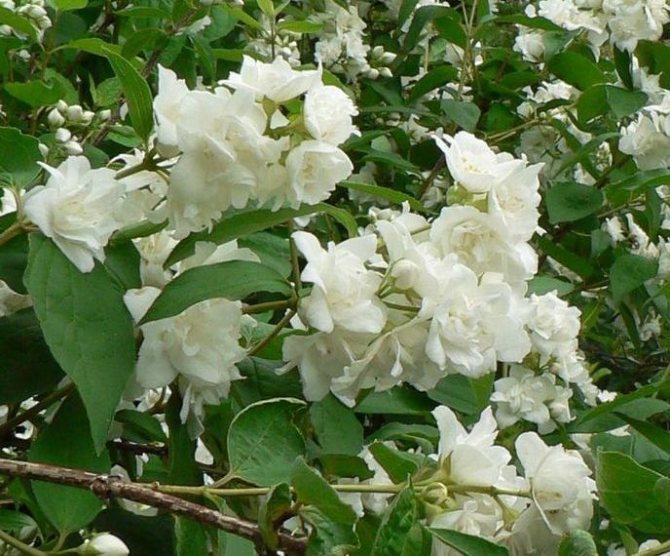
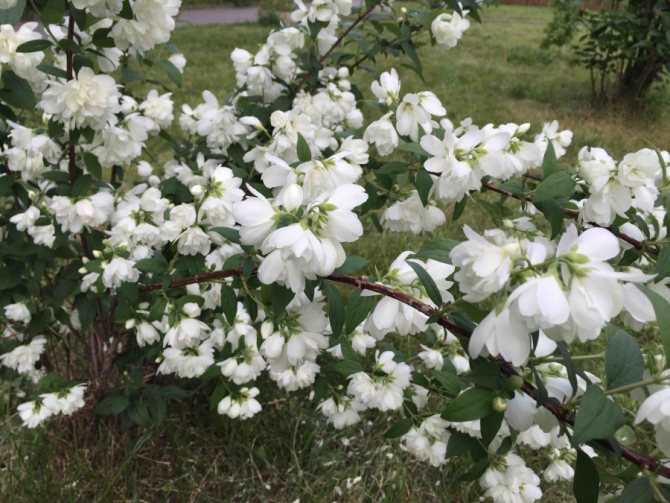
- Anshantman. European variety with original flowers. This variety is also called “Charm”. Blooms up to 25 days.
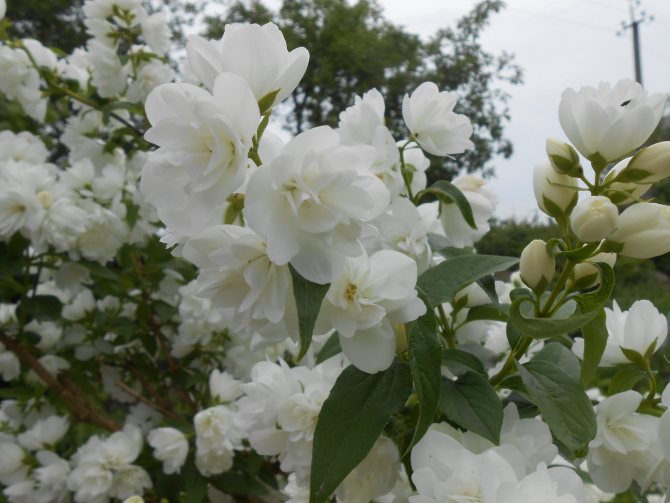

- Girandol. The branches are looking down. Height is not more than 1.5 m. Terry flowers of small diameter and delicate cream shade with a light aroma.

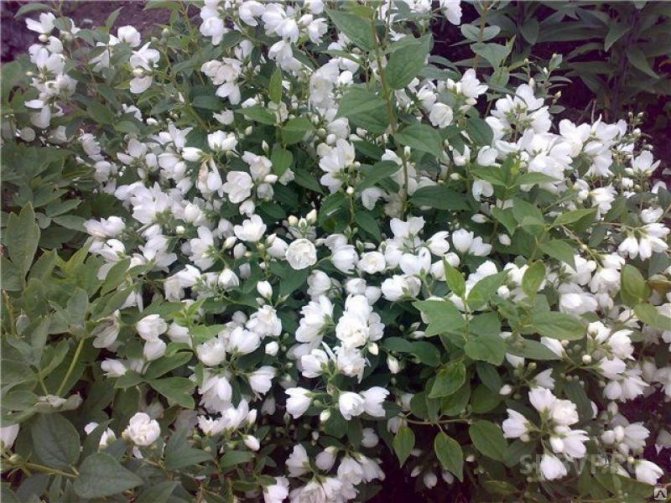
- Ermine mantle. Semi-double white flowers give off a strawberry smell. It does not fade for a long time. Blooms up to 50 days. Reaches up to 80 cm in height.
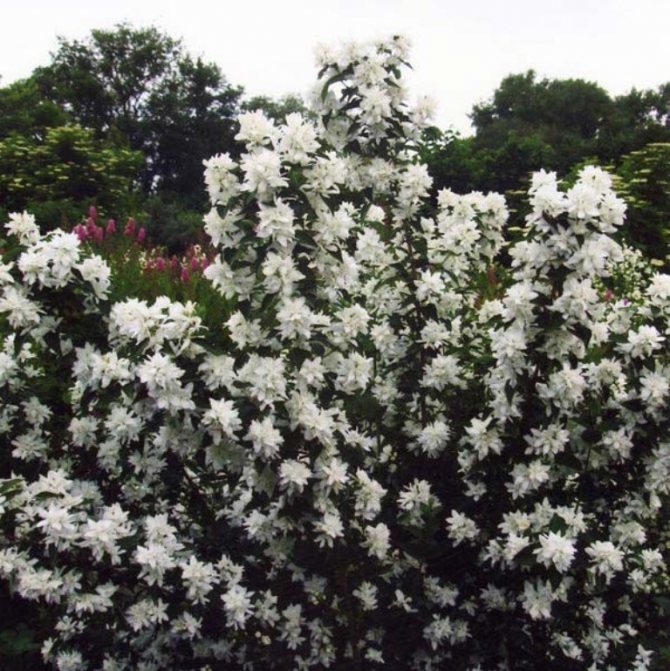

- Shnistrum. Reaches a height of up to 3 m, grows rapidly. White terry branches give off a fruity smell.

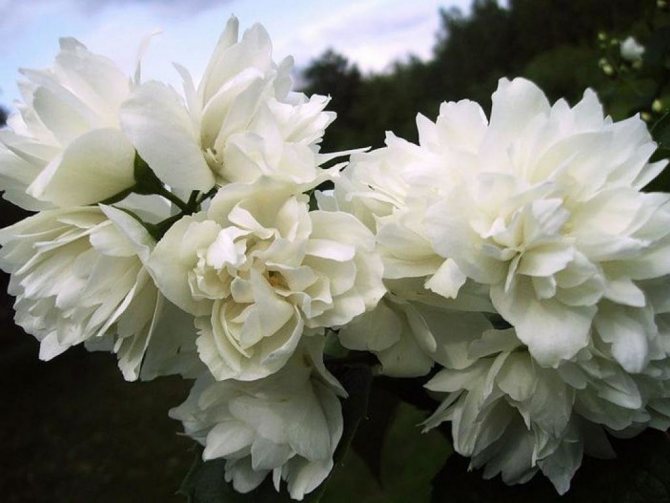
Terry chubushnik, with a muted aroma, only vaguely resembles the smell of jasmine flowers.
Chubushnik planting
For a long time it was believed that the shrub is able to survive only in garden conditions. But, having planted a mock orange near the rivers, Mark Catesby concluded that the bush takes root in the wild. Today, garden jasmine adorns parks, squares and cities.
The place is chosen in advance. You need soft soil and a lighted area.
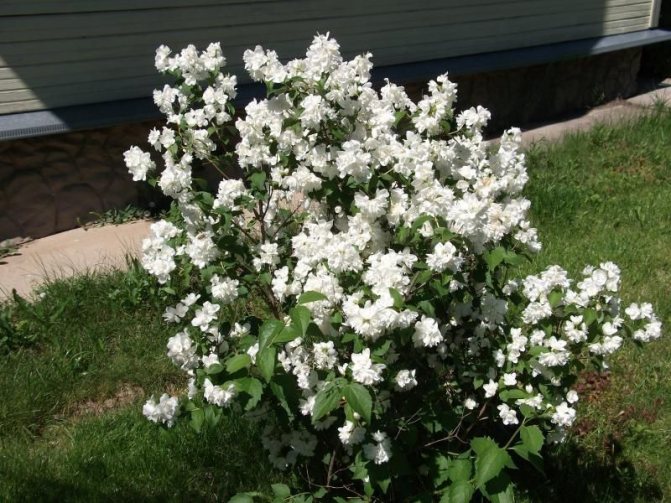

Planting time: mid September – mid October. In the spring, the shrub is planted before the buds swell on the trees.
The soil is made up of a mixture of humus, sand, leafy earth in a ratio of 1: 2: 3. Drainage is added to increase water permeability during planting.
Step by step guide
Several shrubs are planted at a distance of 0.5-1.5 m.
For a living wall, a distance of 50 cm is enough. A hole is preliminarily dug, which is filled with drainage together with crushed brick to a height of no more than 10-15 cm. Above, the soil is filled up from humus, sand and leafy earth. The procedure is performed 7 days before disembarkation.


It is planted with a root deepening of 3 cm. Water each hole abundantly with two buckets of water. After the soil has settled, add dry earth.
One bush is planted in a hole 50 cm deep. The hole is filled with a fertile mixture. The roots are buried only 3 cm, otherwise the decay of the rhizome will begin. The soil around the trunk is intensively compacted and watered abundantly with water.
Important!
Water for irrigation must be defended and allowed to warm up in the sun. After two days, after disembarkation, a mixture of peat and sawdust with a height of no more than 4 cm is laid out around the trunk.
Care of the plant
Chubushnik loves the sun and air. The more light, the more colors. In the shade, the rhizome stretches in length, and the flowers become smaller.
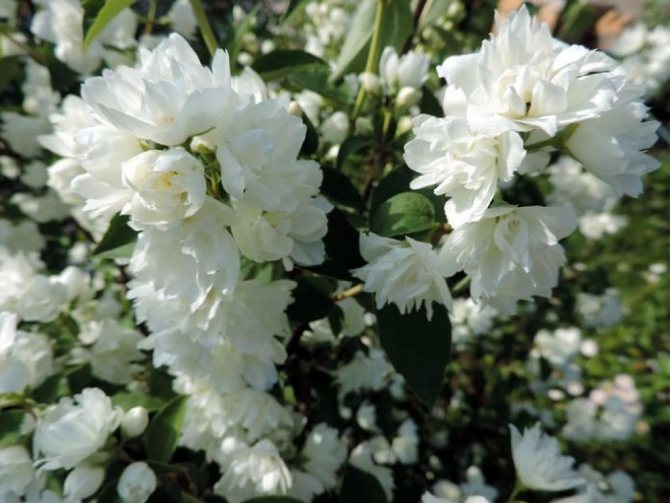
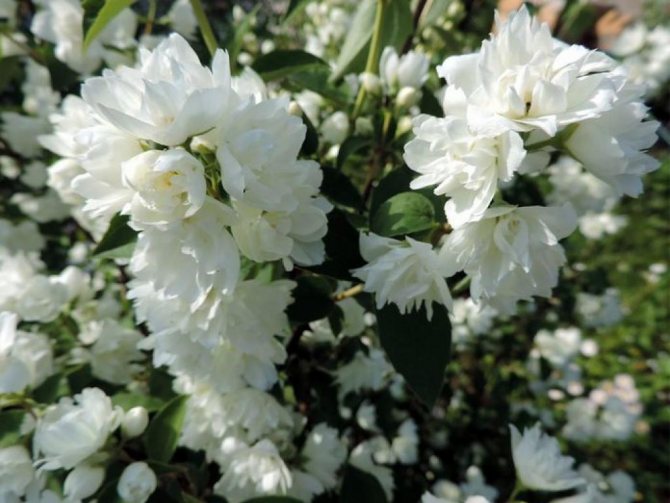
Easily tolerates winter and cold. Even if it dies during winter frosts, the strong root system remains alive. To recover, it is required to cut off the upper frostbitten part, the affected area will resume on its own. It is important to remove weeds around the flowering plant in time.
Watering is done every 6-7 days. The volume of water is at least 2-3 buckets. During the flowering period, watering can be daily. But the top layer of the earth must have time to dry out. Able to survive skipping watering or feeding.
Important!
The lack of moisture is determined by the condition of the flower. The inflorescences lose their elasticity, become lethargic and begin to sag.
Top dressing and fertilizers
A year later, after the bush has taken root in a new place, it is worth feeding with fertilizers. In spring, the plant is fed with slurry, which is used only once a year. When the chubushnik has faded, fertilize with wood ash, scattering the mixture around the circumference of the trunk and pouring plenty of water.

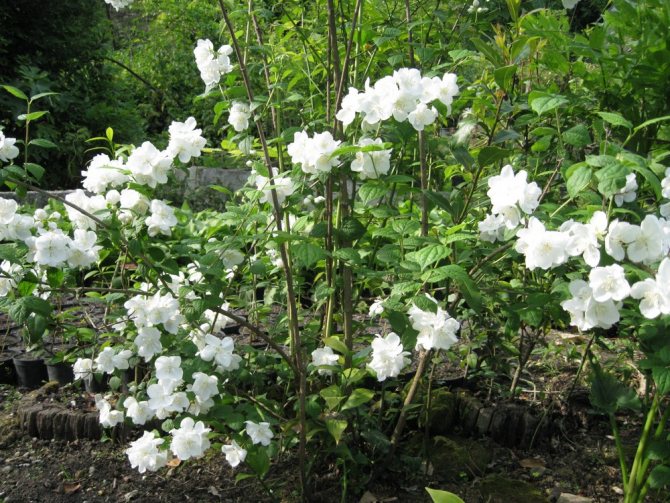
Cannot tolerate heavy, dense soil. Does not survive near groundwater. But it feels comfortable in light soil saturated with oxygen.
After 4 years, mineral additives are included in fertilizers.
These are:
- urea;
- superphosphates;
- potassium sulfate.
When mulching, you can reduce the frequency of watering and weeding.
Preparing for frost
Before the onset of winter, the bushes planted in the current year are prepared for the cold weather. The root layer of the earth is insulated with peat, soil and compost, and the crown is covered with burlap.


Adult plants can easily tolerate cold weather. Frost-damaged twigs are cut in the spring for early renewal.
Reasons for the lack of flowering
Wrong location. Shaded areas prevent colors from coming out. Groundwater close to the root structure overmoistens the soil. Also, dense and dry soil does not allow the roots to develop properly.
Insufficient care. Untimely or too frequent watering can ruin even such an unpretentious creature. To avoid waterlogging of the soil, it is recommended to lay out a drainage layer of at least 15 cm. Pests and lack of fertilizers can also turn into a problem.
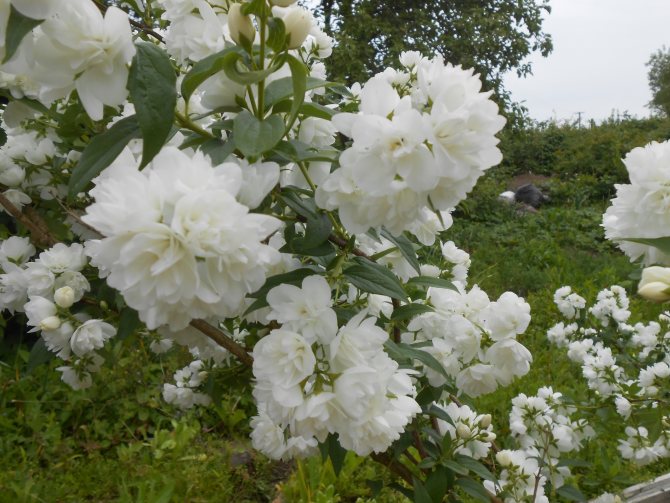
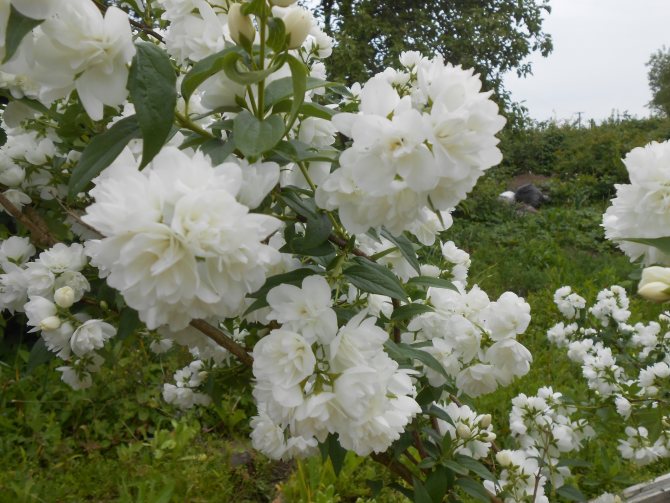
The root should not go deeper than 30 mm into the hole. Otherwise, rotting of the root structure begins, which does not allow the flowers to open.
Nitrogen. A high nitrogen content in fertilizers and fertilizing, as well as the frequent use of these additives, can destroy shrubs.
Trimming
Wellness pruning is carried out in the fall, rejuvenating in the spring. Last year’s shoots bloom with special splendor. In the fall, thinned, diseased and dried branches are removed. Otherwise, the shrub takes on an unkempt look, and the flowers become smaller every year.

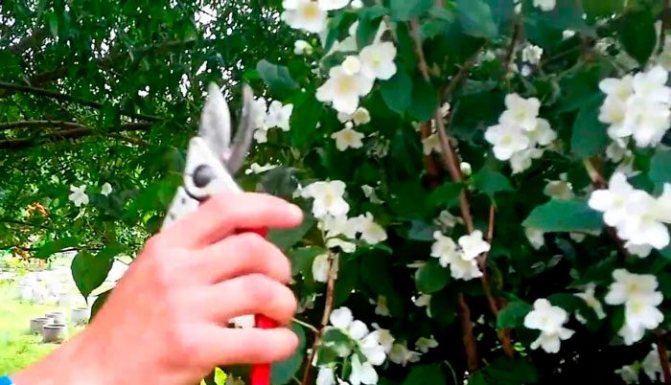
Anti-aging pruning is done every 3 years. At this time, shoots that are more than three years old are cut off. Trunks exceeding 30 cm in height are also cut. Fresh cuts are processed with garden varnish.
Important!
Before you start pruning the plant, you should make sure that the process of sap flow has not begun.
Transfer
The transfer takes place at the same time as the landing. From September to October and in spring until the buds open on the trees.
A new hole is prepared in 1-2 weeks. Immediately before transplanting, the soil is watered abundantly, 50% of old shoots are cut off. Having planted the chubushnik in a new place, the shrub needs to be watered, mulched.
vermin
Sometimes the lack of flowering is a consequence of the appearance of pests. Terry chubushnik, the description of which speaks of resistance to pests, can sometimes become infected from neighboring plants. The bush should be examined occasionally as a preventive measure. The most common enemy of garden jasmine is the spider mite.

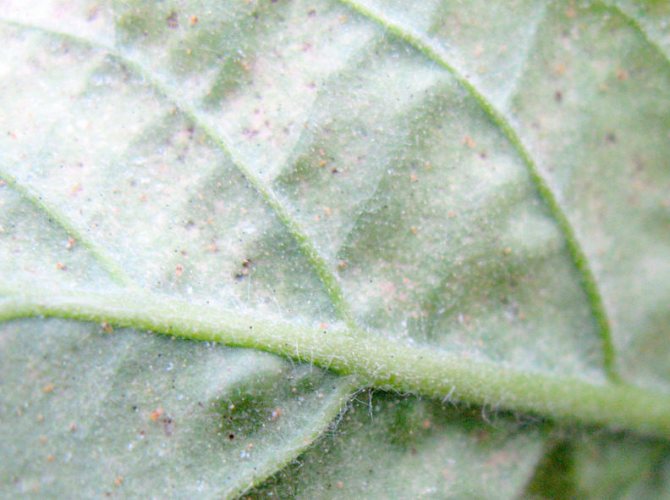
The main pests:
- spider mite;
- hawthorn;
- leaf weevil;
- click beetles;
- bean aphid.
Insect repellents:
- A spider mite dies when treated with an emulsion of 3% Ketan or 2% Phosphamide solution.
- Bean aphids are killed by Rogor, Karbofos.
- The leaf weevil does not tolerate Chlorophos.
One of the primitive pest control methods is laundry soap. A bar of soap is grated and dissolved in 10 liters of warm water. This mixture is able to drive away most of the small pests.
Outdoor Care
Decorative bow – planting and care in the open field
The chubushnik shrub, planting and caring for which will not take much time and effort, will annually delight with abundant flowering. And some varieties also smell good, which makes the plant even more attractive. You need to take care of the chubushnik as for any garden plant: water, fertilize, mulch and protect from weeds.
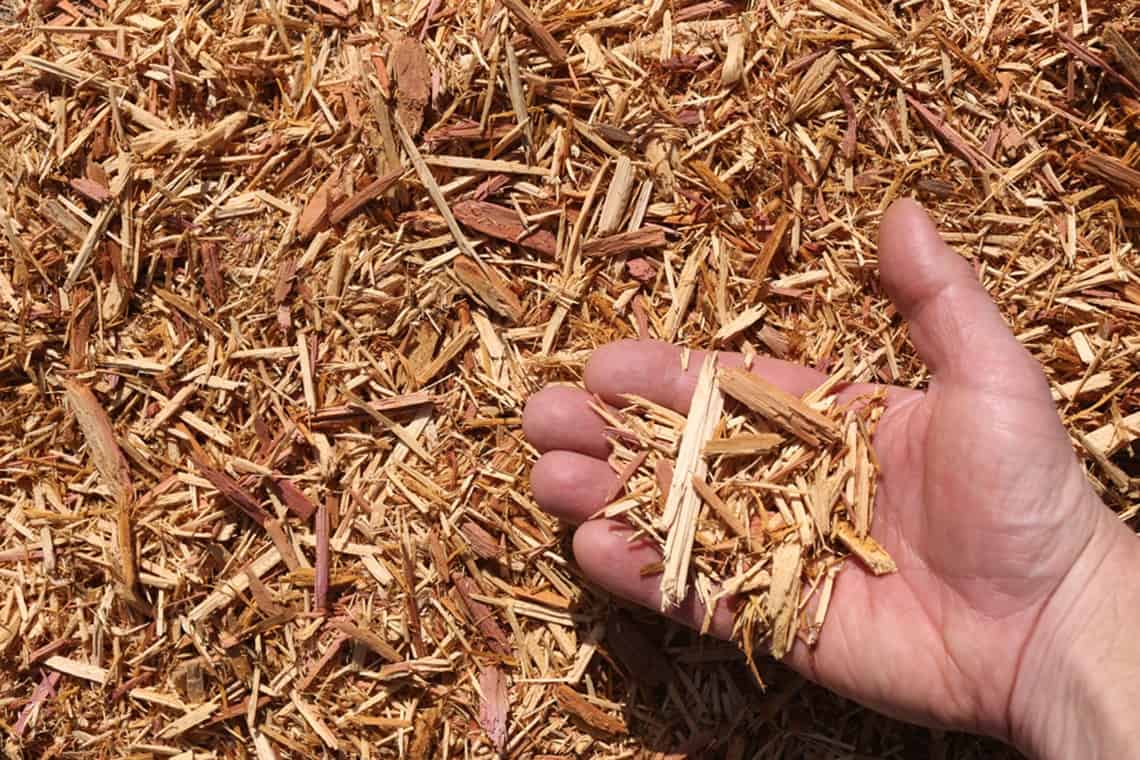
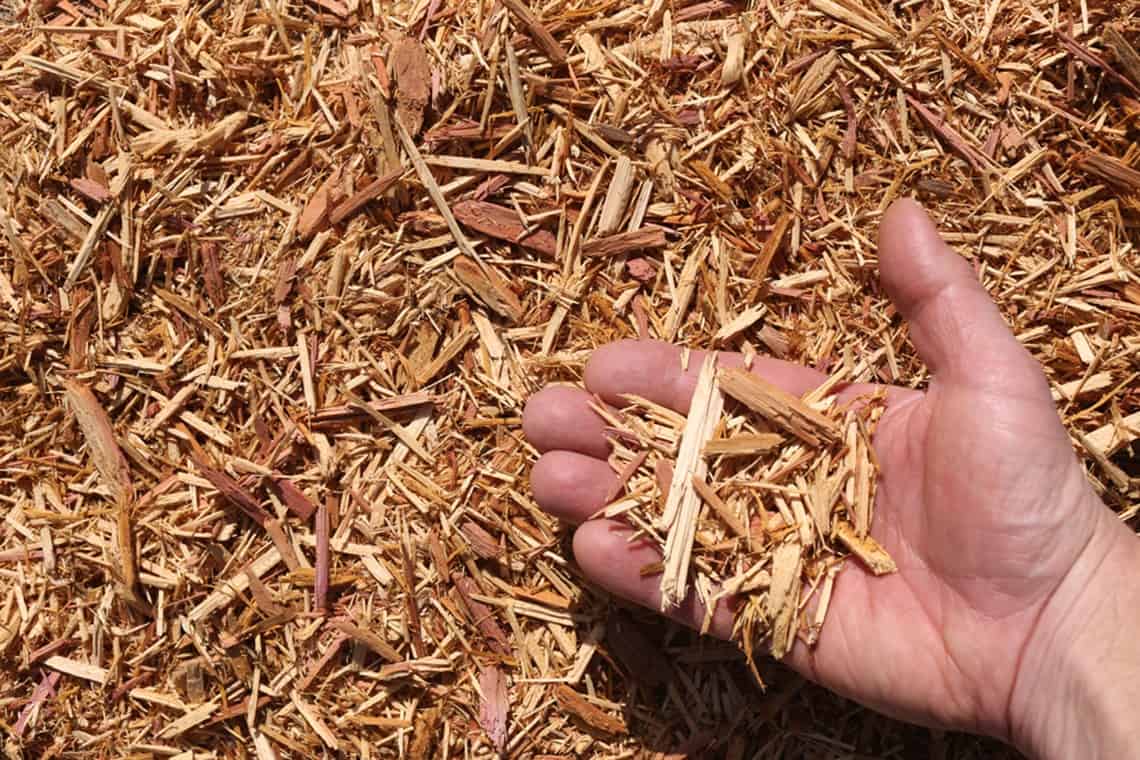
Sawdust mulching
How to feed the chubushnik:
- In the spring, it is recommended to apply mineral fertilizers.
- After flowering, potash preparations or wood ash are used.
- Slurry is used annually, the raw material is diluted with water in a ratio of 1 to 10.
How to water
Watering the chubushnik plant is necessary in dry weather. If it is rainy outside, additional moisture is not required. You need to navigate by the condition of the soil. In a drought, watered once a week. Depending on the size of the bush, take one or two buckets of water. A well-established irrigation system is the basis for a flower’s health.
What, how and when to feed the chubushnik
Only once a year, in late spring, one bucket of diluted slurry infusion is introduced under the jasmine bush. To do this, take 1 part of the slurry and 10 parts of water. Starting from the second year, in addition to manure, fertilizing with mineral fertilizers is connected.
It includes:
- urea, in the amount of 15 g,
- potassium sulfate – 15 gr
- and superphosphate in the amount of 20 grams.
All these components are bred in a bucket of water, which is enough to feed 2 adult plants. This procedure is recommended to be carried out annually with the beginning of the growing season, in the spring. After the flowering of jasmine, urea is excluded from the top dressing, while wood ash is connected.
In a bucket of water they dilute:
- 15 grams of potassium sulfate,
- 30 gr superphosphate, wood ash 100 gr.
- This solution is enough for 1 m² of land.
Reproduction
In addition to the seeds, the mock-orange can be propagated by cuttings, dividing the bush and even air layering. The first method is the most convenient and popular. Cuttings are prepared in summer. Shoots should be about 10 centimeters long. The cut site is treated with a special agent that stimulates the formation of roots, and placed in the ground. It is obtained by mixing garden soil and sand.
It is not necessary to deepen the cuttings much, 5 centimeters is enough. Young plants are placed under a film and left outside. Periodically they need to be ventilated and sprayed. In two weeks, the mock-orange will take root.
Dividing a bush is also not a complicated procedure, with the exception of strong adult plants. It will take a lot of effort to pull them out of the ground and carefully plant them, dividing them into parts.
To propagate the mock-orange flower with air layers, you need to carry out the following manipulations:
- Choose a strong and sturdy shoot.
- In late spring, wire it under the first bud. You can make a small incision and treat with a growth stimulant.
- Make a hole about 7-10 centimeters and put a shoot in it, sprinkle with earth.
- It is necessary to water and spud it, cover it with spruce branches for the winter.
- For the next fall, you can transplant to a separate place.
Important! In early spring or September, you can gently dig up the root growth. In this case, it is important not to damage the plant itself. It is transplanted to a separate bed, and after a year or two is transferred to a permanent place.
How to care for jasmine in autumn and winter
Jasmine needs care with the onset of the calendar autumn, so it is important:
- feed the shrub with mineral fertilizers;
- water if necessary;
- pruning spoiled, old and dry branches.
How to prepare your jasmine bush for winter rest time
- in the fall, it is necessary to pay attention to the mock-orange, whose age does not exceed 1 year. He needs increased protection from the winter cold. With the help of dense warm batting, young bushes are covered, tied with twine;
- deciduous humus is scattered on the soil surface in the area of the root system.
- in winter, especially after heavy snowfalls, the shrubs are freed from the snow cap.
- with the onset of the end of winter and early spring, it is also recommended to drop snow from the crown of the bush.
Diseases and pests
Diseases that can infect a mock-orange include:
- Root rot. The underground part of the plant is affected. If brown spots appear on its leaves, then it is worth digging it up and examining the roots. All damaged areas must be removed, and the shrub must be moved to a new location. The contaminated land must be cultivated. The cause of the disease is waterlogging of the soil, when moisture stagnates at the roots.
- Gray rot. Irregular brown spots appear on the leaves. The foliage falls off, and before that begins to dry. It is necessary to remove all diseased leaves and spray the plant with antifungal agents.
- Septoria. First, small dark spots appear on the leaves, then they fall off. The plant practically does not bloom and dies if left untreated. All affected parts of the chubushnik must be collected and discarded. Treat it with Bordeaux mixture or another remedy for fungi.


septoriosis
Among the pests are noted:
- Bean aphid. The insect drinks the sap of the plant, taking away nutrients. As a result, the leaves curl up and stop growing. In addition, aphids are a distributor of viral diseases. To get rid of it, Karbofos is used;
- Mealybug. A bloom resembling cotton wool appears on the leaves. Special preparations, including Confidor, Calypso, destroy the pest;
- Spider mite. A thin web is visible on the inside of the leaves. The pest is not always detected immediately, only when the plant begins to wither. To destroy it, you need to spray the bush with Keltan emulsion.
Diseases and insect parasites
Garden jasmine has a high degree of resistance to various diseases and pests. But sometimes it happens that the following insects strike him:
- aphid . To destroy the pest, use Karbofos or Rogor.
- spider mite . This insect can be dealt with with a 3% Keltan emulsion or a 2% Phosphamide solution. Processing is carried out several times at intervals of a week.
- Green leaf weevil . For the extermination of weevil larvae and beetles, Chlorophos is used for spraying.
Sometimes budding gardeners wonder why garden jasmine doesn’t bloom. The reasons may be a lack of light, water or a lack of feeding. Chubushnik does not bloom due to excessive spring pruning. Planting too deep can cause no flowering. In these situations, it is necessary to correct mistakes in plant care.
Garden jasmine
Chubushnik is an ideal plant for landscaping. With garden jasmine, you can create a dense hedge. In order for flowers to decorate the garden for about two months, you need to make a flower garden from several varieties of shrubs, which differ in different flowering periods. The blossoming shrub flowers fill the air with a pleasant sweet scent that can be enjoyed for hours.
Flowering period
Depending on the variety, the chubushnik blooms from May to July. This period lasts from 3 to 5 weeks. Duration depends on weather conditions and location. So, a plant that is not in direct sunlight blooms a little longer. For some, the process starts again in the fall. During the colorful and fragrant period, the shrub needs to be watered more often.
Why does the plant not bloom:
- Excessive moisture or, conversely, dry soil.
- Kidneys are frozen.
- The place is not suitable.
- Pests attacked.
Chubushnik in landscape design


Chubushnik in garden design photo
Designers have found many ways to use snow-white jasmine bushes to update the surrounding area.
You can often see:
- jasmine bushes as a hedge;
- as an element in the decoration of alleys;
- will attract attention and like a lonely flowering bush;
- in a single composition with other plants, for example, with roses, hydrangeas;
- as a symmetrical geometric pattern in the landscape area of a summer cottage;
- in the design of a thematic garden.
What can be said in conclusion
Be sure to plant a chubushnik on your site. Let it be not one species, but several, and then the whole summer you will enjoy the flowering of this unpretentious shrub. The unique combination of the color of green foliage and the color of the snow-white jasmine flowers contributes to the harmonization of space and peace of mind.
Chubushnik after flowering
After flowering, the shrub is waiting for sanitary pruning. In addition to wilted buds, damaged shoots are removed. Fertilizers that contain phosphorus and potassium need to be applied to the soil, and mulch the ground around the chubushnik with sawdust or peat.
When and how to collect seeds
Chubushnik is rarely propagated by seeds. This method is only suitable for species plants. Artificial varieties will lose their properties. In addition, the plant spends a lot of energy on the formation of seed bolls. Therefore, flowers that begin to wilt are often removed.
After a colorful flowering period, seed pods are formed. This is the fruit of the plant.
Important! The seeds can only be used throughout the year. If planted later, the plant will not emerge. At the same time, they must be stored in the refrigerator. It is advisable to immediately mix them with sand and send them to wait in the wings.
Preparation for winter
Preparation for winter is not required, the plant is unpretentious and rather hardy. The main thing is to correctly carry out the procedures after the end of flowering.
In winter, you do not need to take care of the plant, this applies to both watering and feeding. It is recognized as frost-resistant, therefore it does not need a covering material. Although at very low temperatures, the tops of the bush may suffer. They are removed in the spring when the plant is routinely pruned.
Preparing for the winter chubushnik
Most plant varieties are distinguished by good winter hardiness, especially of domestic selection. Adult chubushnik bushes do not need winter shelter, and it is advisable to mulch specimens up to 2 years old with a 4-5 cm layer of peat or pine needles.
If the tops of annual shoots freeze in an adult garden jasmine in winter, it will still bloom, and by pruning in the spring it is easy to restore the crown of the bush.
In the conditions of the Moscow region, the Leningrad region, Siberia and the Urals, it is better to plant winter-hardy varieties.
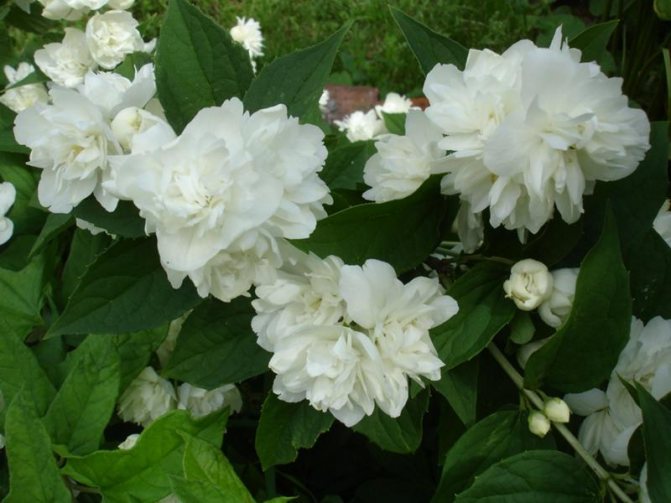

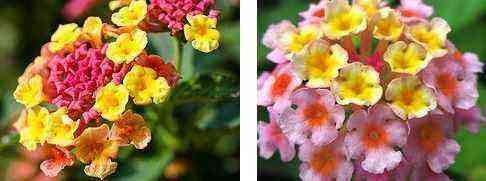

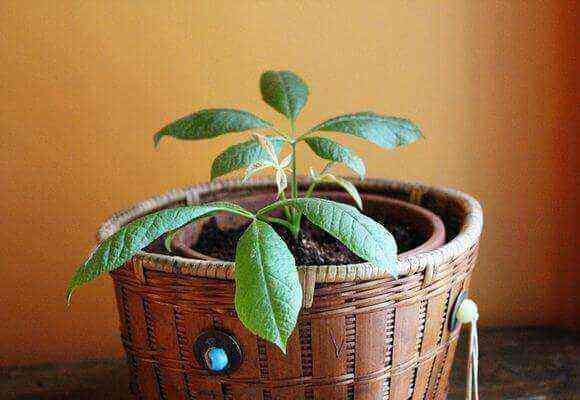
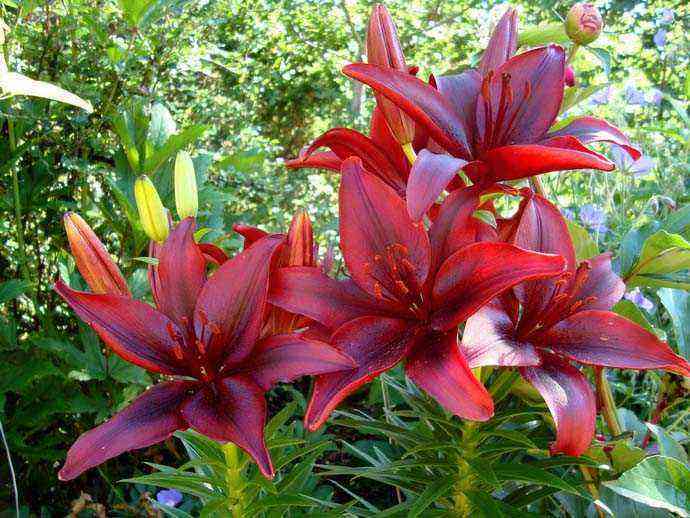
![Cultivation of Manihot esculenta [Cassava, Cassava] Cultivation of Manihot esculenta [Cassava, Cassava]](https://farmer-online.com/wp-content/uploads/2021/05/Cultivation-of-Manihot-esculenta-Cassava-Cassava.jpg)
![Cultivo de Magnolia stellata [magnolia estrellada] Cultivo de Magnolia stellata [magnolia estrellada]](https://farmer-online.com/wp-content/uploads/2021/05/Cultivo-de-Magnolia-stellata-magnolia-estrellada.jpg)

